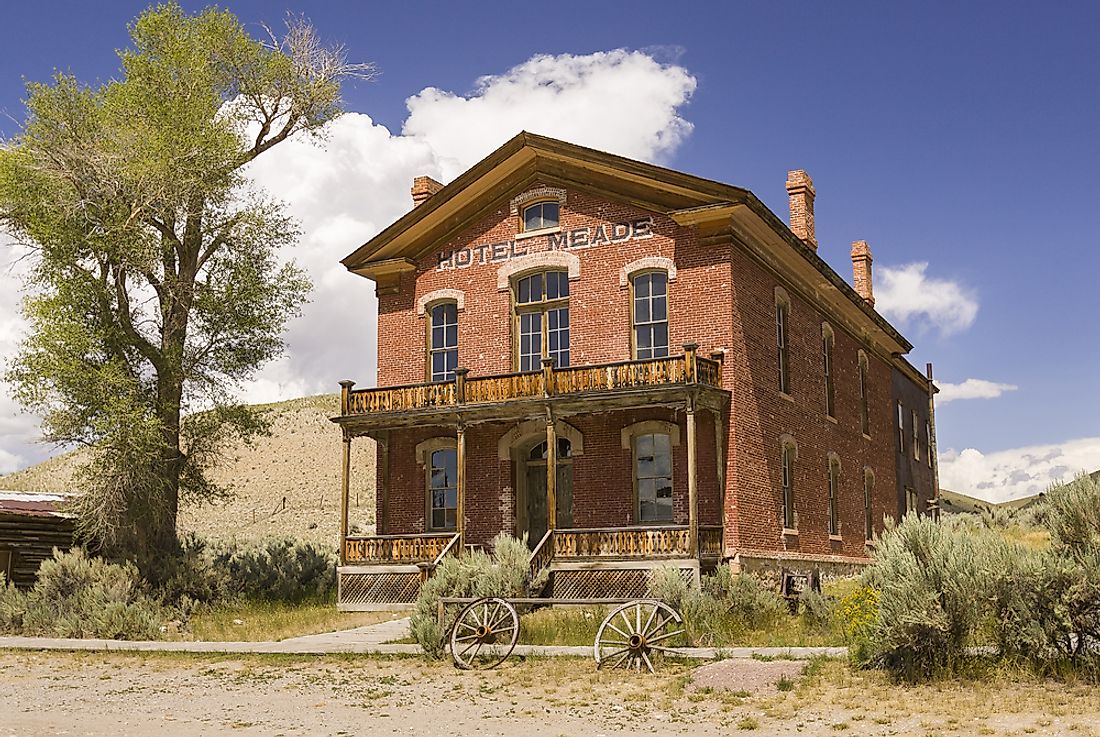Ghost Towns in America: Bannack, Montana

Bannack is a renowned ghost town in America and is located in Beaverhead County, Montana. It lies approximately 18 miles upstream where Grasshopper Creek joins Beaverhead River. The creek was initially named Willard Creek but was renamed Grasshopper Creek after the large grasshopper migration in July 1862. Bannack was founded in the 19th century when John White, together with members of the Pike Peakers, discovered gold in the creek waters where Bannack lies today. At its peak, Bannack was home to over 10,000 people. However, Bannack did not last long due to the state of lawlessness and declining gold mines which forced miners to seek for gold in Virginia City.
The Rise of Bannack
In March 1862, Bannack was discovered as a gold mine. Word spread quickly through the state of Montana about the new gold mine and, similar to the previous California gold rush of 1848, people migrated in large numbers to Bannack, which became the capital city. The people who rushed to Bannack included miners, refugees of the Civil War, outlaws, and businesspersons who intended to establish businesses for the newcomers. The business community established three hotels bakeries and blacksmith shops, a grocery, two butcher shop, a restaurant, a brewery, and four salons.
By October 1862, Bannack was full of tents, caves, huts, shanties, wagons, and dugouts, and by the fall of 1864, Bannack was at the peak of operations with a population of ten thousand people. A school was set up in a crude log cabin to cater for the education needs of school-going children.
The Fall of Bannack
Due to its remote location, Bannack was connected to the rest of the world through the Montana Road Trail. However, the trail was full of agents who terrorized locals by levying hefty fees when leaving and entering the town.
Gold became a scarce resource in Bannack, as the gold mines could not satisfy the thousands of miners. In 1865, a group of miners discovered new gold mines in the Aden Gulch, 80 miles away from Bannack. Due to the state of lawlessness thriving in Bannack, the miners formed a new settlement camp in the area, which became the thriving settlement of Virginia City. As word spread through Bannack, people packed up and began leaving the town in groups.
By the 1940s, the business and social class that had settled in Bannack had moved out and only a few people were left behind. Businesses closed down and the last amenity, which was the school, was shut down. In 1970, the last group migrated from Bannack marking its decline.
Bannack Today
The Montana Department of Fish, Wildlife, and Parks salvaged the town from destruction in 1954 by declaring it a State Park. The department’s staff refurbish the buildings and provide guests with a chance to explore the schools, hotels, courthouse, and churches. Every year, the park hosts the Bannack Days event in July where visitors come and get a glimpse of what life was during Bannack’s glory days. Bannack Days is a four-day event that depicts the first 20 years of the ghost town. Folks demonstrate their pioneer of skills spinning wool into yarn, and visitors learn how to make wagon wheels and baskets. Visitors get to see the 1862 placer mining camp, blacksmithing, schoolhouse, saloon, general store, boarding house, and butcher shop. Sunday services are held in the old church house depicting what the old west was really like.











